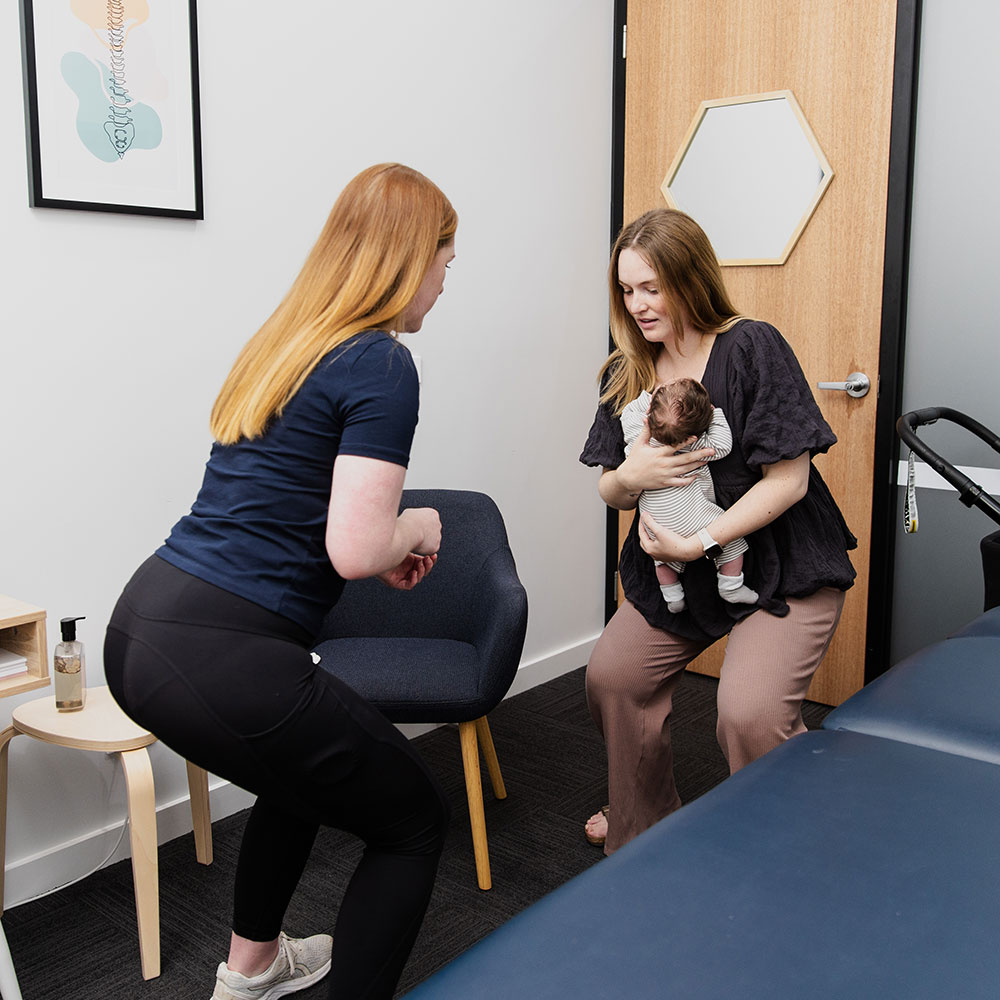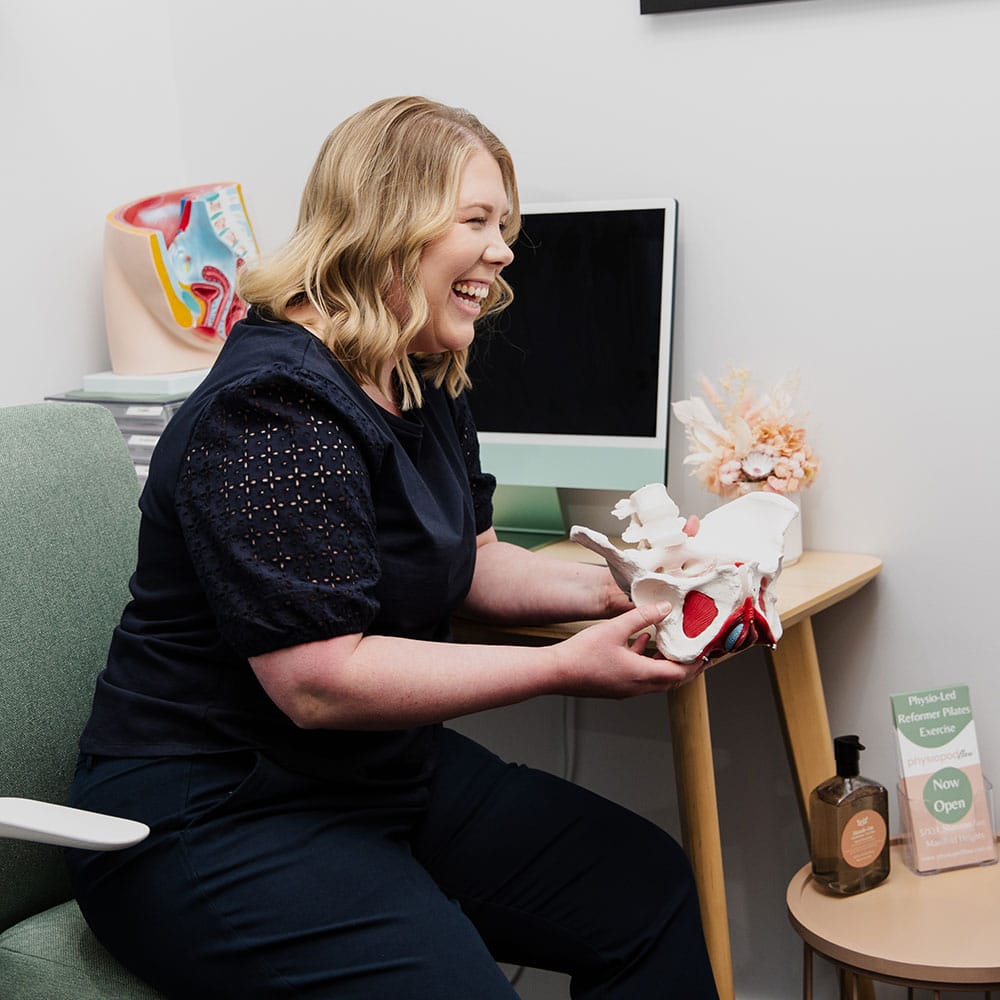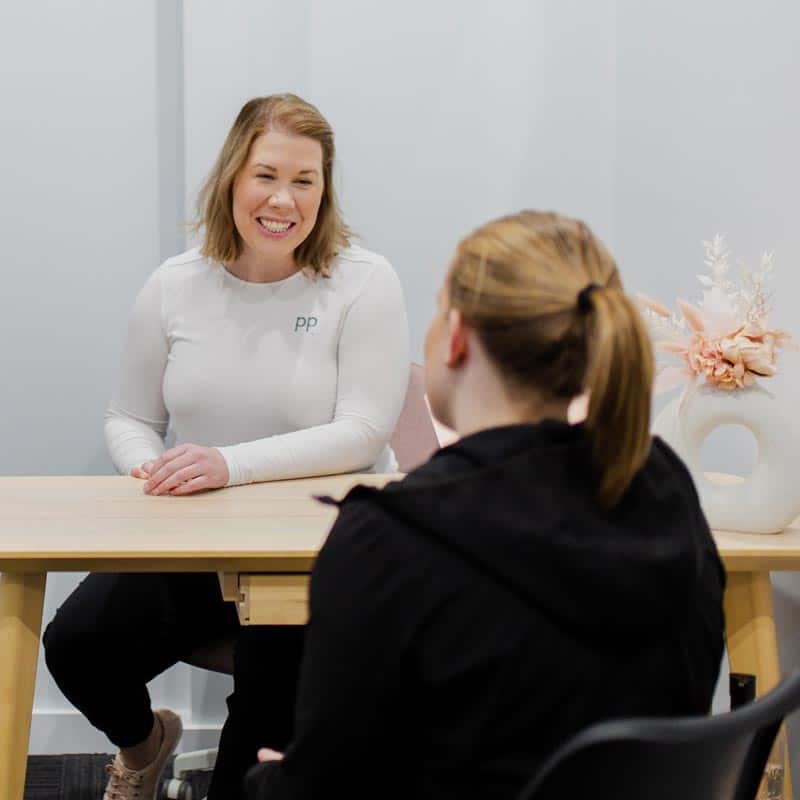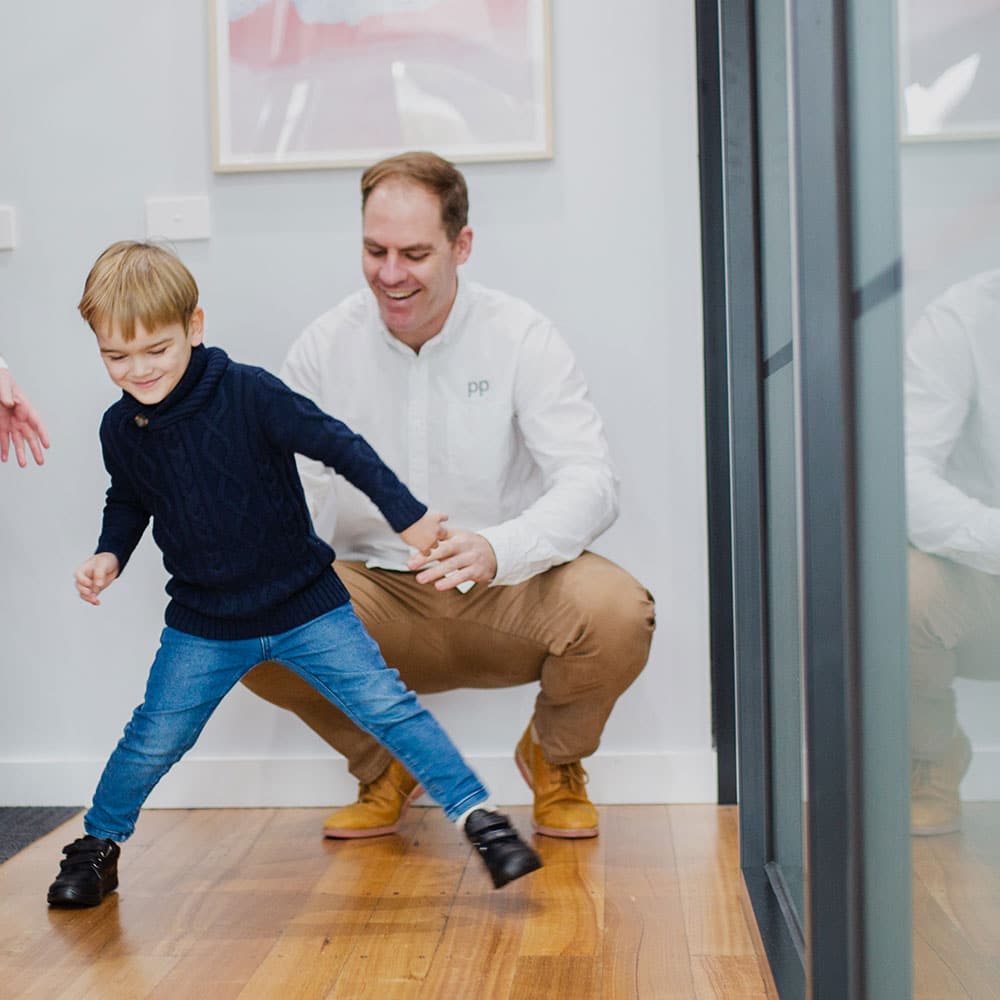Physiotherapy
Bladder Health.
There are many things that can change how our bladder functions. Some common signs our bladder may not be in good health include;
- Bladder pain
- Frequent UTIs
- Bladder incontinence symptoms such as:
- Difficulty emptying the bladder
- Increased urgency to urinate
- Unintentional leakage
When troubling symptoms show up, it is important to get to the root cause of the problem.
Our physios do this by completing a thorough assessment. Firstly by discussing with you your bladder history and symptoms – they may ask you to keep a bladder diary for a short period of time or ask about particular lifestyle habits you may have.
With your consent, your physio can then conduct an internal assessment which will give them a clear picture of your pelvic floor function and any signs of prolapse etc.
A full body assessment will also be incorporated so as to help understand if there are any other contributing factors that may be influencing your symptoms.
Bladder Pain
Bladder pain is known as constant or recurring pain in or around the bladder. It affects approximately 1 in 20 Australians, and is most common in women.
Treating bladder pain can be complicated and is often multifactorial, however there is strong evidence supporting the implementation of pelvic floor exercises in improving the symptoms of bladder pain*.
One of our pelvic floor physiotherapists can identify restrictions in you pelvic floor muscles and connective tissues which may be causing your symptoms. Exercises can then be recommended to reduce the pain and regain control over your bladder function.
Bladder Incontinence
Bladder incontinence is the accidental loss of urine, often following a sudden intense urge to urinate. It is a common issue, affecting 1 in 3 Australians and can range from slight urine leak to complete loss of bladder control. This condition can affect all ages! Not just the elderly.
Treatment to manage your incontinence starts with booking an initial consultation where your physiotherapist will work with you to develop an individual treatment plan for your concern.
This initial consult will create a clear picture of what type of incontinence you may be suffering from. There are three main types of urinary incontinence; stress, overflow and urge;
Stress Urinary Incontinence
Stress urinary incontinence is unintended urine leakage brought on by an increase in pressure on the bladder such as from coughing, sneezing, laughing or jumping. This type of incontinence is usually seen with people who have weakened or stretched pelvic floor muscles, such as those who have just given birth, and can also be seen in those who are highly athletic and involved in high impact sports due to the extra load such activities has on the pelvic floor muscles.
Treating this type of incontinence will often involve Pelvic Floor Training specific to your circumstances. It may also be recommended that you avoid running, jumping or heavy lifting, drink less fluid and avoid caffeine and alcohol dependent on your situation.
Overflow Urinary Incontinence
Overflow Urinary Incontinence is when the bladder is not emptying effectively, and small amounts of urine often leak out as a result. People with OUI will often have difficulty urinating and find themselves straining, they can also have a small, slow stream and a frequent urge to urinate.
There are a number of reasons someone may develop this type of incontinence and diagnosing the specific causes is important for proper management. Such reasons can be pelvic organ prolapse, overactive or weak pelvic floor, poor emptying techniques, blockages or medications.
Your physiotherapist will work with you to identify the underlying issues and in turn, how to effectively manage your symptoms.
Urge Urinary Incontinence
Urge Urinary Incontinence is sometimes known as Overactive Bladder. It is described as a sudden feeling of needing to urinate and does not always mean the bladder is full. This type of incontinence usually means the signals from your bladder to your brain are not functioning as they should, meaning your bladder isn’t properly communicating with your brain about when it is full.
This can mean that your bladder could fill and only give your brain few seconds to get to the toilet or conversely, that you feel the urge to go to the toilet even when your bladder is not full.
This type of incontinence is estimated to impact almost 2 out of 5 women and 1 in 10 men in Australia. Men with Urge Urinary Incontinence often experience this in older age as a result of prostate disease.
Many other conditions are linked with causing UUI, such as urinary tract infections (UTIs), neurological conditions; Parkinson’s, Alzheimer’s, Dementia, a stroke etc, nerve or spinal cord damage such as spinal cord injury, multiple sclerosis or childbirth or even stress, anxiety or depression.
To properly navigate treatment of this condition, it’s important to be assessed by a pelvic floor specialist who will discuss with you your conditions and lifestyle to determine the best treatment plan for your individual needs.
Physiotherapy Management for Bladder Dysfunction
After confirming your diagnosis, your Physiotherapist will determine the best treatment plan for you. This can include pelvic floor training exercises and techniques. Controlling other external factors like loading techniques.
Meet Our Bladder Health Physiotherapy Team
Make An Appointment
Ready to address your bladder health concerns and regain control? Book your appointment with our Women’s Health Physiotherapists today and take the first step towards improved bladder function and confidence.
Bladder Physiotherapy
Frequently Asked Questions
Where Are You Located?
Newtown
95 Nicholas Street, Newtown VIC 3220
We are located on Nicholas Street around the corner from Enzo Pennys butcher.
Is There Parking Available?
Newtown
There is plenty of parking in front of the building and along Nicholas Street.
Bannockburn
Large parking area located at the rear of the practice.
How Long Are Appointments?
If it is your first visit, please allow for 1 hour, except for 30mins for General Podiatry. You will be advised before your appointment through booking confirmation or staff as to how long it will be.
What Should I Bring With Me?
Along with yourself please bring any relevant imaging such as Xray’s, MRIs, Ultrasounds ect that you may have. Any referral you may have been given from Doctors or others. If you are seeing the Podiatrist please bring any relevant footwear, such as shoes you work in, run in, play sport in or is giving you pain. If you are able to wear or bring with you shorts or active wear, this will allow us to assess the lower limbs much more effectively.
How Can I Cancel My Appointment?
Cancellation Policy
We have a 24-hour cancellation and non-attendance policy. Please notify us as soon as you are able so we can offer the time to someone else. Failure to notify us of your cancellation may incur a $60 charge.
What Payment Options Are Available?
We have an onsite HICAPS machine to claim any Health Fund rebates for Physiotherapy and Podiatry (please check your health fund for rebates as each fund and level of cover is different). We are also able to claim GP referred care plans on site (please note there is a gap after a care plan rebate depending on your appointment).

Related Treatments
Our Affiliates


PhysioPod Flow - Reformer Pilates Exercise
Our Pilates Reformer classes are a great form of exercise for pre and postnatal women, a form of rehab or just to stay fit and healthy. All our classes are run by our Women’s Health Physios.
Cycling Bike Fit
Every cyclist is different so not all bike set up should be the same. A proper fit Bike Fit with our trained fitter Luke can help reduce pain while riding as well as prevent injury and improve performance.
Not sure if you need to see a Physio or a Podiatrist?
The Collective Body Consult™️ Might Be For You
The Collective Body Consult™ is our unique, innovative assessment model which combines both Physiotherapy and Podiatry together in the same initial appointment.
By utilising the experience and expertise of two health professionals in the one consultation, we are able to thoroughly discuss and assess your pain or concern in depth.
Follow Us
@physiopodco
















